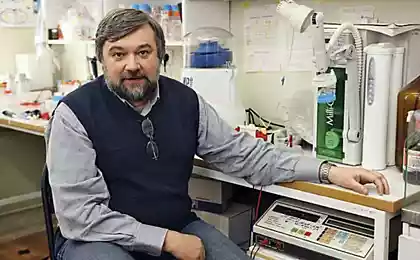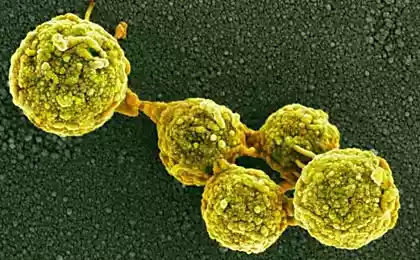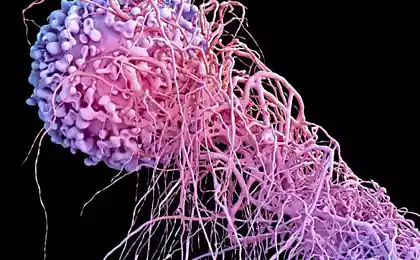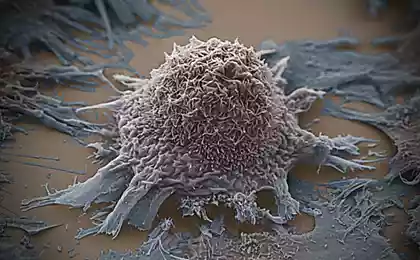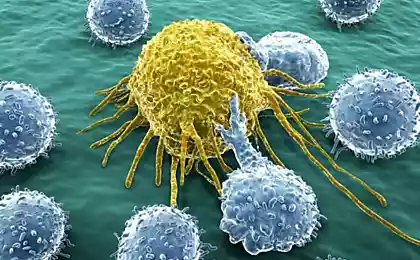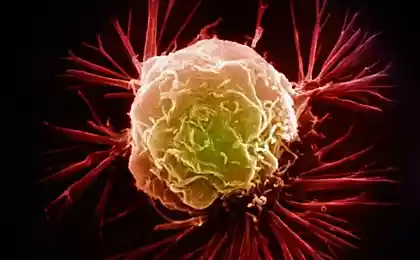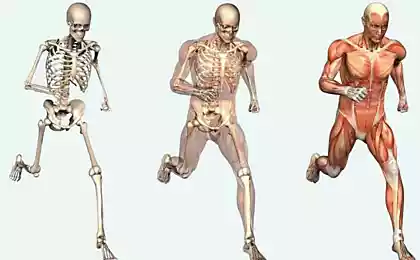442
Is it possible to identify cancer in 10 years before the disease?
Blood levels of some amino acids indicate the onset of malignant processes in the body for several years before the tumor manifests itself.

Pancreatic cancer is considered one of the most dangerous. Only 1 of 25 patients lives with him at least five years, and all because he is particularly active forms secondary tumors in other organs that occurs before primary tumor in the pancreas becomes visible. Therefore, early diagnosis for these cancers is particularly relevant – and particularly difficult.
Researchers from mit, Harvard and the Cancer Institute Dana–Farber (USA) proposed a method of determining pancreatic cancer already for a few years before the disease will manifest itself. Matthew Hayden (Matthew Heiden), Brian Volpin (Brian Wolpin) and their colleagues analyzed fifteen hundred blood samples for their content of more than hundreds of molecules-metabolites – that is, those that are products of transformations of other biomolecules. For example, metabolites of protein molecules can be single amino acids, useplease from the long polypeptide chains of protein.
It turned out that some of these amino acids can serve as a good long-term "predictor" of cancer in people with high content of leucine, isoleucine, and valine in the blood in later years, was diagnosed with a pancreatic tumor. Moreover, "prediction" came true at different times: a year later, or five years or even ten years after the collection of blood for analysis. No signs of the tumor, which could be seen by conventional methods, the study participants were not.
Why cancer leaves such a characteristic metabolic "signature"? The authors believe that the tumor, though still in its infancy, provoke some metabolic changes in the body, including the collapse of some proteins, which appear in the blood of the above-mentioned three amino acids (which have a common structural feature – a branched carbon chain, or radical). Probably cancer destroys proteins, especially rich in these amino acids. On the other hand, the tumor may block the conversion of valine, leucine and isoleucine, which they accumulate in the blood. How exactly on a molecular level associated pancreatic cancer and a branched-chain amino acids, researchers have yet to figure out.
A warning about the disease, which appears so far in advance (10 years!), would kill cancer in the Bud, but can he really believe? Still, the 10-year interval between the first metabolic changes and manifestation of the tumor looks too amazing. The relationship between them was tested in mice predisposed to pancreatic tumors and found that these animals appear the same metabolic changes. That is, the correlation between the level of branched-chain amino acids in the blood and the development of cancer can be studied in animal models. First and foremost, there will need to answer two questions. First – is it possible in the same way to diagnose other types of cancers? Maybe they have some early metabolic signs that appear before the tumor becomes visible. And second – whether these amino acids can be a reliable diagnostic molecules? It may be that their level still increases and for some other reasons, not necessarily connected with the activity of malignant cells.
However, even if it would be the most reliable method for early diagnosis of cancer, to abandon the other types of diagnosis, no one will. Find amino acids in the blood, may be easier than to analyze mutations in DNA, however, without genetic analysis fail to determine the individual nature of the tumor. For effective treatment information about the disease need to collect from everywhere, not neglecting any sources of information.
Source: nkj.ru

Pancreatic cancer is considered one of the most dangerous. Only 1 of 25 patients lives with him at least five years, and all because he is particularly active forms secondary tumors in other organs that occurs before primary tumor in the pancreas becomes visible. Therefore, early diagnosis for these cancers is particularly relevant – and particularly difficult.
Researchers from mit, Harvard and the Cancer Institute Dana–Farber (USA) proposed a method of determining pancreatic cancer already for a few years before the disease will manifest itself. Matthew Hayden (Matthew Heiden), Brian Volpin (Brian Wolpin) and their colleagues analyzed fifteen hundred blood samples for their content of more than hundreds of molecules-metabolites – that is, those that are products of transformations of other biomolecules. For example, metabolites of protein molecules can be single amino acids, useplease from the long polypeptide chains of protein.
It turned out that some of these amino acids can serve as a good long-term "predictor" of cancer in people with high content of leucine, isoleucine, and valine in the blood in later years, was diagnosed with a pancreatic tumor. Moreover, "prediction" came true at different times: a year later, or five years or even ten years after the collection of blood for analysis. No signs of the tumor, which could be seen by conventional methods, the study participants were not.
Why cancer leaves such a characteristic metabolic "signature"? The authors believe that the tumor, though still in its infancy, provoke some metabolic changes in the body, including the collapse of some proteins, which appear in the blood of the above-mentioned three amino acids (which have a common structural feature – a branched carbon chain, or radical). Probably cancer destroys proteins, especially rich in these amino acids. On the other hand, the tumor may block the conversion of valine, leucine and isoleucine, which they accumulate in the blood. How exactly on a molecular level associated pancreatic cancer and a branched-chain amino acids, researchers have yet to figure out.
A warning about the disease, which appears so far in advance (10 years!), would kill cancer in the Bud, but can he really believe? Still, the 10-year interval between the first metabolic changes and manifestation of the tumor looks too amazing. The relationship between them was tested in mice predisposed to pancreatic tumors and found that these animals appear the same metabolic changes. That is, the correlation between the level of branched-chain amino acids in the blood and the development of cancer can be studied in animal models. First and foremost, there will need to answer two questions. First – is it possible in the same way to diagnose other types of cancers? Maybe they have some early metabolic signs that appear before the tumor becomes visible. And second – whether these amino acids can be a reliable diagnostic molecules? It may be that their level still increases and for some other reasons, not necessarily connected with the activity of malignant cells.
However, even if it would be the most reliable method for early diagnosis of cancer, to abandon the other types of diagnosis, no one will. Find amino acids in the blood, may be easier than to analyze mutations in DNA, however, without genetic analysis fail to determine the individual nature of the tumor. For effective treatment information about the disease need to collect from everywhere, not neglecting any sources of information.
Source: nkj.ru
Robots-customs officers will identify the contraband
Absolute energy independence through renewable energy


